
These two Planet SkySat images were captured on February 7, 2023, and reveals major damage in central Kahramanmaraş, Turkey, in the aftermath of yesterday’s earthquakes in Turkey and Syria.



These two Planet SkySat images were captured on February 7, 2023, and reveals major damage in central Kahramanmaraş, Turkey, in the aftermath of yesterday’s earthquakes in Turkey and Syria.


Procures satellites and plans Australian operations for new Low Earth Orbit constellation to power connectivity for smart devices

EchoStar Corporation (Nasdaq: SATS) has announced an agreement with Astro Digital, a designer, manufacturer and operator of smallsat systems, for the construction of a global, S-band, mobile satellite service (MSS) network.

Under the agreement, Astro Digital will manufacture the satellites for the constellation, which will deliver global Internet of Things (IoT), machine-to-machine (M2M) and other data services starting in 2024. EchoStar will operate the constellation from its Australian subsidiary, EchoStar Global.
The 28 satellites in this constellation design will feature an advanced software-defined radio (SDR) with onboard storage and processing to power smart two-way device connectivity. The satellites will be enabled with the LoRa® (meaning “Long Range”) protocol for connecting very low-cost, long-lived devices. With support for 5G non-terrestrial network (NTN) services, the constellation will serve as a foundation for EchoStar to engineer 5G New Radio (NR) based NTN capabilities, according to 3GPP release 17 specifications.
Through its subsidiary, EchoStar Mobile Limited, EchoStar also operates an MSS network in Europe using the GEO EchoStar XXI satellite, which will interoperate seamlessly with the new LEO constellation.

“This agreement represents another step forward towards our goal of a global non-terrestrial 5G network,” said Hamid Akhavan, CEO, EchoStar. “With our engineering ingenuity, our service delivery expertise and our spectrum rights, EchoStar is uniquely positioned to offer worldwide S-band satellite services to help meet the insatiable demand for complete and constant connectivity.”
“These new capabilities will fill a gap in the connected ecosystem, greatly expanding worldwide IoT interoperability,” said Josh Williams, managing director, EchoStar Global Australia. “Our team, together with Astro Digital, has already begun integration of our Australian-based operations to bring to market a truly global solution with consistent and reliable network performance.”
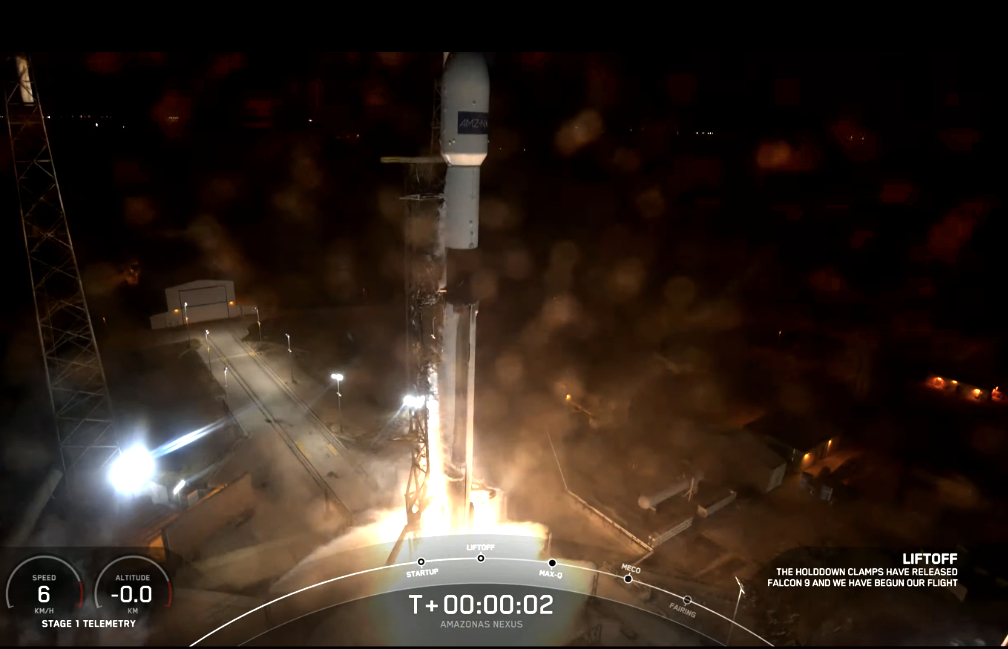
A SpaceX Falcon 9 has successfully launched the Hispasat Amazonas Nexus mission from Cape Canaveral SFS’ Space Launch Complex 40.


The first stage booster supporting this mission has previously launched SES-22, ispace’s HAKUTO-R Mission 1, and three Starlink missions.
Following stage separation, the first stage landed on the Just Read the Instructions droneship stationed in the Atlantic Ocean.

Original Response Date: March 1, 2023

SDA has issued a DRAFT solicitation for the first of several types of Tranche 2 Transport Layer (T2TL) space vehicles—T2TL Beta. This DRAFT solicitation establishes the foundation for Tranche 2 of the Proliferated Warfighter Space Architecture (PWSA).
To provide the warfighter full utility, the PWSA requires a global data and communications Transport Layer provided by a proliferated constellation of relatively small, mass-producible space vehicles in LEO.
The T2TL space vehicles will be similar to those currently under development for the Tranche 1 Transport Layer (T1TL) and Tranche 1 Development and Experimentation System (T1DES), with targeted technology enhancements, mission-focused payload configurations, increased integration, and greater production efficiencies.
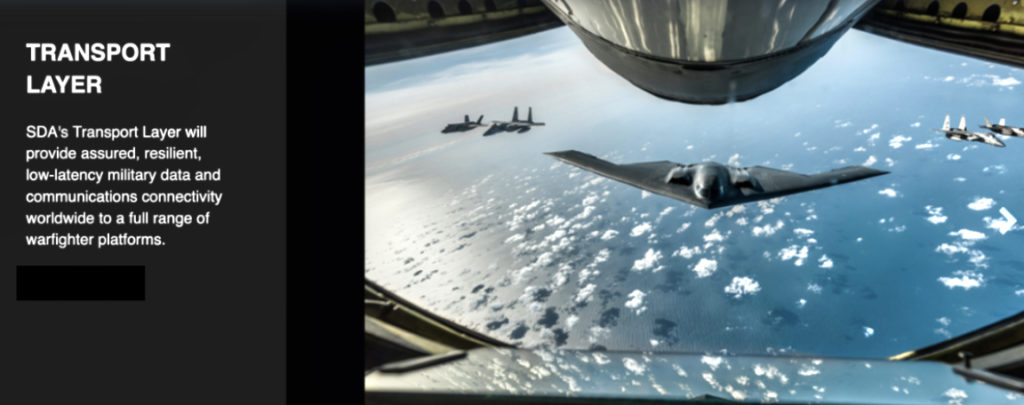
T2TL will provide global communications access and deliver persistent regional encrypted connectivity in support of warfighter missions around the globe. Specifically, T2TL features multiple space vehicle and mission configuration variants procured through a multi-solicitation and multi-vendor acquisition approach.
Please review the full DRAFT solicitation for details and submission instructions. This DRAFT solicitation may be used to inform future solicitations.

The SAM.gov online solicitation listing
Proliferated Warfighter Space Architecture (PWSA) Tranche 2 Transport Layer – Beta Program Solicitation (DRAFT)
The Space Development Agency (SDA) seeks input on its Draft Tranche 2 Transport Layer – Beta (T2TL-Beta) Program Solicitation.
T2TL features multiple space vehicle (SV) and mission configuration variants procured through a multi-solicitation and multi-vendor acquisition approach.
T2TL-Beta furthers the resilience and advances the capability of the Tranche 1 Proliferated Warfighter Space Architecture (PWSA) with an initial global proliferation of Integrated Broadcast Service – LEO (IBS-L) and TACSATCOM capabilities.
This draft solicitation is for development, manufacture, test, launch integration, and deployment of the T2TL-Beta space vehicles, payloads, and mission-enabling ground systems.
The Draft T2TL-Beta Program Solicitation downloadable attachment PDFs may be accessed at https://sam.gov/opp/3e3eb41990ef4098b893b10cd6d297b6/view
To receive the additional Draft Program Solicitation Attachments and the Draft T2TL-Beta Bidder’s Library, please send an email to osd.pentagon.ousd-r-e.mbx.sda-p[email protected] with the subject line “SDA Draft T2TL-Beta Solicitation Content Request.”
Please include your organization’s CAGE code and location in your request. Requests received from organizations that do not possess a facility clearance of at least Secret will be evaluated on a case-by-case basis.
SDA will endeavor to respond to all requests in the order that they are received and within one business day of receipt. All feedback should be provided via email to osd.pentag[email protected] no later than March 1, 2023 at 12:00pm, Eastern, with the subject line “SDA Draft T2TL-Beta Solicitation Feedback.”
Please note that the above email address differs from the Special Notice number. This is intentional. SDA-PS-23-03 will be the final T2TL-Beta solicitation number.

Virgin Orbit (NASDAQ: VORB) and satellite manufacturer SatRev have announced a follow-on, launch services agreement (LSA) for additional launches of SatRev’s satellites in 2023 and beyond.
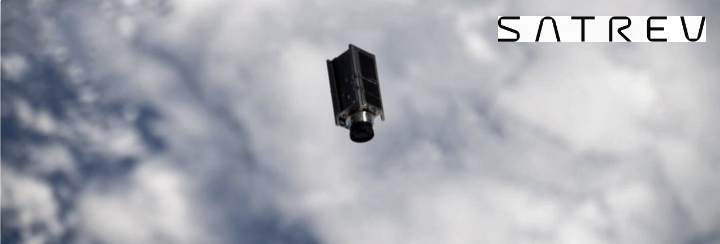
This new agreement provides SatRev with the flexibility to launch 500 kg. over multiple launches to a variety of different orbital planes from the Mojave Air and Space Port in California, USA, and/or from other international launch sites as they come online with mission requirements.
Four satellites built by SatRev have already been delivered to LEO by Virgin Orbit’s LauncherOne system onboard missions Tubular Bells and Above the Clouds. The parties anticipate launching a new batch of SatRev’s satellites as soon as 2023.
STORK is a CubeSat for EO and technology testing and built and operated by SatRev from Poland. The STORK 3U CubeSats features SatRev’s Vision-300 imager with a ground resolution of up to 5m. SatRev will soon start deploying ScopeSat, with the revolutionary DeploScope technology that will enable SatRev to collect high resolution data from 6U CubeSats. The STORK and ScopeSat satellites will form the Real-time Earth Observation Constellation that will provide multispectral mid- and hi-resolution data with a revisit time of 30 minutes.

Virgin Orbit CEO, Dan Hart, said, “The team at SatRev continues to advance the frontiers of what is possible to accomplish with a constellation of smaller, more affordable satellites. SatRev has been a great collaborator, and we are excited by what the future holds as they expand their constellation and continue to bring top-notch space services to their international customer base. We’re delighted to build upon the strong foundations of this relationship with our latest launch contract, and we look forward to providing launch services for the SatRev team for many years to come.”
SatRev CEO, Grzegorz Zwoliński, said, “This marks a major milestone for SatRev as we officially announce our Launch Service Agreement with Virgin Orbit. This 3-year partnership further solidifies our commitment to providing reliable and cost-effective access to space for our customers. With Virgin Orbit’s proven track record in the industry, we are confident that this collaboration will drive innovation and bring new opportunities for growth. We are excited to work together and bring our shared vision for the future of satellite launch to life.””

Additionally, SatRev has signed a three year contract with Poland’s National Support Center for Agriculture (KOWR) worth $9,000,000 for the development of the Satellite System for Monitoring Agricultural Crops (S2MUR).
SatRev’s offer was selected as the most advantageous within the framework of a tender conducted by KOWR for the provision of EO imagery with a spatial resolution of up to 4 meters for S2MUR. The overall objective of the project is to support the decisions of users during the growing season and in emergency situations, such as natural disasters caused by adverse weather events.
Recipients of the S2MUR system will be agricultural producers, including individual farmers, as the system will monitor crops at plot level, including small plots with unusual shapes. Public administration at government and local government levels will also be recipients of the system.
“After several years of research and development by multidisciplinary teams of scientists and engineers, we are ready to enter the market. Our existing relationships with municipalities in Poland, together with the development of an ambitious project for KOWR, give us the speed, momentum and ability to deliver comprehensive solutions,” said Grzegorz Zwolinski, CEO of SatRev.
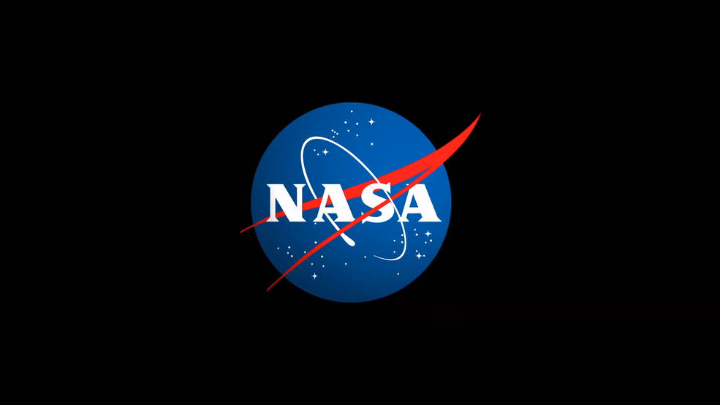
NASA has selected Astrotech Space Operations, LLC of Titusville, Florida, and Space Exploration Technologies Corp. (SpaceX) of Hawthorne, California, to provide commercial payload processing services for agency missions launching from multiple locations.

Under the Spacecraft Processing Operations Contract, NASA will issue a fixed-price, indefinite-delivery, indefinite-quantity contract that has a potential 10-year ordering period. The maximum total contract value is $100 million across all contracts supporting operations from NASA’s Kennedy Space Center in Florida, Cape Canaveral Space Force Station in Florida, as well as Vandenberg Space Force Base in California.
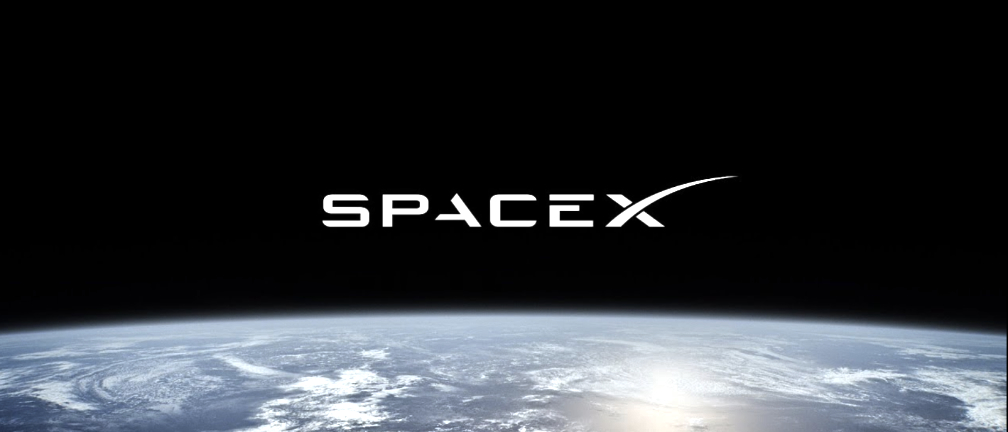
The contract also includes a special on-ramp provision to enable additional providers and incumbents to submit proposals introducing new commercial processing facilities and support services not available at the time of the initial award. The ordering period runs from approximately February 2023 to February 2033.
NASA will issue task orders for the facilities and services necessary to perform prelaunch processing of spacecraft and associated rocket flight hardware of the completed payload stack before being delivery to the launch pad.
NASA’s Launch Services Program at Kennedy will manage the contract. The program is responsible for launching uncrewed rockets delivering spacecraft that observe the Earth, visit other planets, and explore the universe – from weather satellites to telescopes to Mars rovers and more.

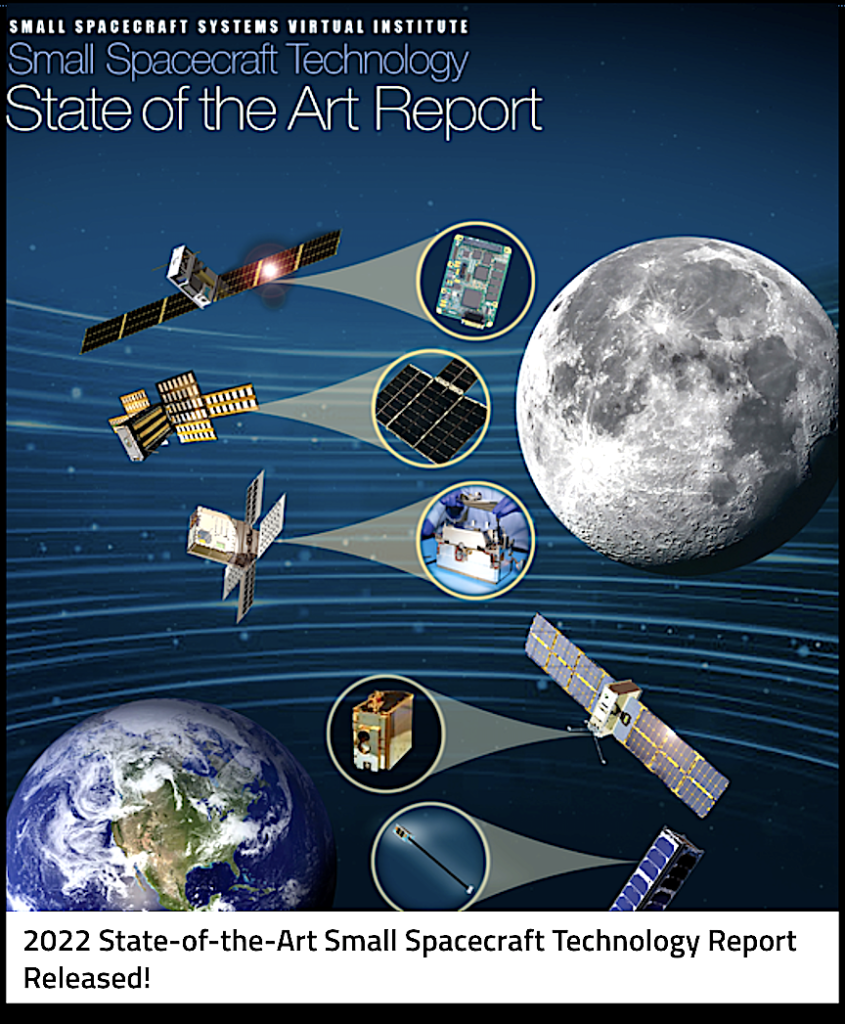
The following is an announcement from NASA…
NASA’s Small Spacecraft Systems Virtual Institute is pleased to announce the official release of the 2022 State-of-the-Art Small Spacecraft Technology report. This endeavor was made successful by the contributions of numerous people across NASA and other organizations who served as authors and reviewers. We thank them and the individuals from the companies, universities, and organizations that provided their time and information for this report.
When the first edition of NASA’s Small Spacecraft Technology State-of-the-art report was published in 2013, 247 CubeSats and 105 other non-CubeSat small spacecraft under 50 kilograms (kg) had been launched worldwide, representing less than 2% of launched mass into orbit over multiple years. In 2013 alone, around 60% of the total spacecraft launched had a mass under 600 kg, and of those under 600 kg, 83% were under 200 kg and 37% were nanosatellites (1). Of the total 1,849 spacecraft launched in 2021, 94% were small spacecraft with an overall mass under 600 kg, and of those under 600 kg, 40% were under 200 kg, and 11% were nanosatellites (1). Since 2013, the fight heritage for small spacecraft has increased by over 30% and has become the primary source to space access for commercial, government, private, and academic institutions. The total number of spacecraft launched in the past 10 years is 5,681 and 45% of those had a mass <200 kg (1).
As with all previous editions of this report, the 2022 edition captures and distills a wealth of new information available on small spacecraft systems from NASA and other publicly available sources. This report is limited to publicly available information and cannot reflect major advances in development that are not publicly disclosed. We encourage any opportunity to publish mission outcomes and technology development milestones (e.g., via conference papers, press releases, company website) so they can be reflected in this report.
Overall, this report is a survey of small spacecraft technologies sourced from open literature; it does not endeavor to be an original source, and only considers literature in the public domain to identify and classify devices. Commonly used sources for data include manufacturer datasheets, press releases, conference papers, journal papers, public filings with government agencies, news articles, presentations, the compendium of databases accessed via NASA’s Small Spacecraft Systems Virtual Institute (S3VI) Information Search, and engagement with companies. Data not appropriate for public dissemination, such as proprietary, export controlled, or otherwise restricted data, are not considered.
As a result, this report includes many dedicated hours of desk research performed by subject matter experts reviewing resources noted above. Content in this 2022 edition is based on data available by October 2022. This report should not be considered as a comprehensive overview of all the technologies but a great reference for the current state-of-the-art SmallSat technologies
The report contains an overview of current state-of-the-art SmallSat technologies and their development status as discussed in open literature. It is not intended to be an exhaustive representation of all that is available on a particular topic. Commonly used sources for public data include manufacturer datasheets, press releases, conference papers, journal papers, public filings with government agencies, and news articles. Readers are highly encouraged to reach out to companies for further information regarding the performance and maturity of the described technology.
The report is available online in webpage format as well as in PDF format as a whole document or in single chapters.
Visit: https://www.nasa.gov/smallsat-institute/sst-soa Suggestions or corrections to this document should be submitted to the NASA Small Spacecraft Systems Virtual Institute at [email protected] for consideration prior to the publication of future issues.

OnThursday, February 2nd., at 2:43 a.m., ET (7:43 UTC), a SpaceX Falcon 9 launched 53 Starlink satellites to LEO from Launch Complex 39A (LC-39A) at NASA’s Kennedy Space Center in Florida.

The first stage booster supporting this mission previously launched CRS-24, Eutelsat HOTBIRD 13F, OneWeb 1, and one Starlink mission.
Following stage separation, the first stage landed on the A Shortfall of Gravitas droneship stationed in the Atlantic Ocean, shown below.


Northrop Grumman Corporation (NYSE: NOC) executive Doug Hurley, former NASA astronaut and Colonel in the United States Marine Corps, was awarded the Congressional Space Medal of Honor by Vice President Kamala Harris for his significant contributions to the nation’s space programs, including human exploration and scientific innovation. Retiring from NASA in 2021, Hurley continues his service in space exploration as Northrop Grumman’s director of business development for the company’s propulsion systems business unit.

In 1969, Congress authorized the creation of the Congressional Space Medal of Honor to recognize “any astronaut who in the performance of his duties has distinguished himself by exceptionally meritorious efforts and contributions to the welfare of the Nation and mankind.” (In later years, the addition of “or her/or herself” recognized the addition of women to the astronaut corps.)

Despite “Congressional” being in the title of the award, the NASA Administrator actually nominates the potential recipients, who then receive the award from the sitting president in Congress’s name. Neil Armstrong, the first astronaut to set foot on the Moon during the Apollo 11 mission in July 1969, and the commander of Gemini 8 in 1966, was one of the first six recipients awarded the medal on October 1, 1978, by President Jimmy Carter.
Read more about Doug’s career at NASA and his transition to Northrop Grumman’s Space Systems business.
Internally-funded LM 400 Tech Demonstrator Satellite Progresses Toward 2023 Launch
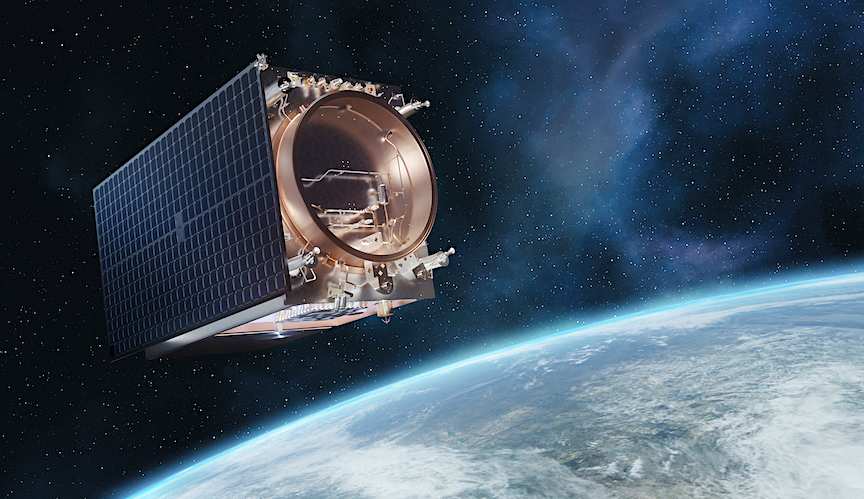
The first Lockheed Martin (NYSE: LMT) LM 400, a flexible, mid-sized satellite customizable for military, civil or commercial users, rolled off the company’s digital factory production line and is advancing toward its planned 2023 launch.
The agile LM 400 spacecraft bus design enables one platform to support multiple missions, including remote sensing, communications, imaging, radar, and persistent surveillance. Lockheed Martin invested in common satellite designs to support demand for more proliferated systems, high-rate production, and affordable solutions. The LM 400 is scalable and versatile starting at the size of the average home refrigerator, with capability to grow for higher power and larger payloads and packaged to enable multiple satellites per launch.
The LM 400 bus can operate in Low, Medium or Geosynchronous Earth orbits, providing greater flexibility than other buses in this class. The LM 400 space vehicle is compatible with a wide range of launch vehicles in a single, ride-share or multi-launch configuration.

“This resilient LM 400 satellite bus was created completely digitally, offering greater flexibility, commonality, and the ability to rapidly configure to order across missions,” said Matt Mahlman, director of strategy and capture at Lockheed Martin Space’s Satellite Bus Center of Excellence. “Given that, we can produce these new satellites faster and at a much lower cost to our customers.”
For potential military applications, the LM 400 conforms to Modular Open Systems Architecture standards for interoperability with other platforms from all the services. This design helps unlock the U.S. Defense Department’s vision for joint all-domain operations and joint all-domain command and control.
Each LM 400 spacecraft includes SmartSat™, Lockheed Martin’s software-defined satellite architecture. SmartSat™ provides even greater mission adaptability and can perform onboard “Edge” data processing, which reduces the time it takes to get actionable data into the hands of mission operators and decision-makers on the ground.
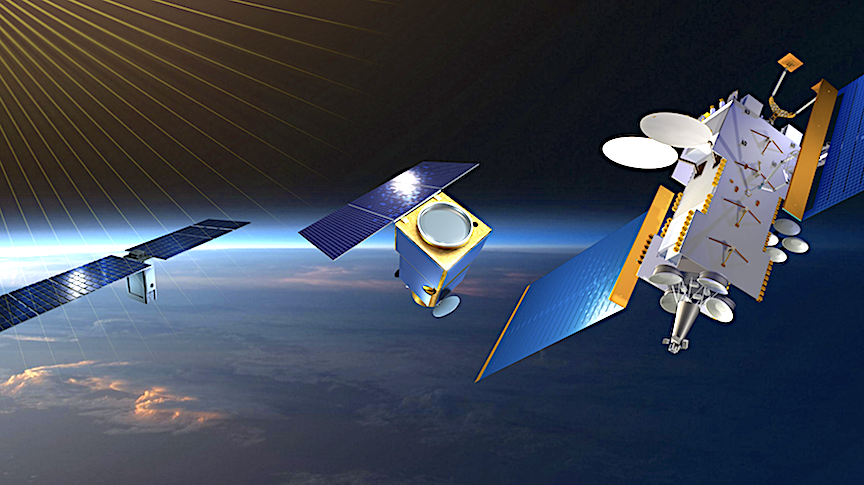
The LM 400 is already under several contracts, most recently being named as one of the satellite buses supporting U.S. Space Force’s planned Missile Track Custody program in Medium Earth Orbit.
Company-Funded LM 400 Tech Demonstrator
The first LM 400 off the production line — coined the LM 400 Tech Demonstrator — is also the first of a planned regular series of self-funded on-orbit LM 400 technology demonstration missions.
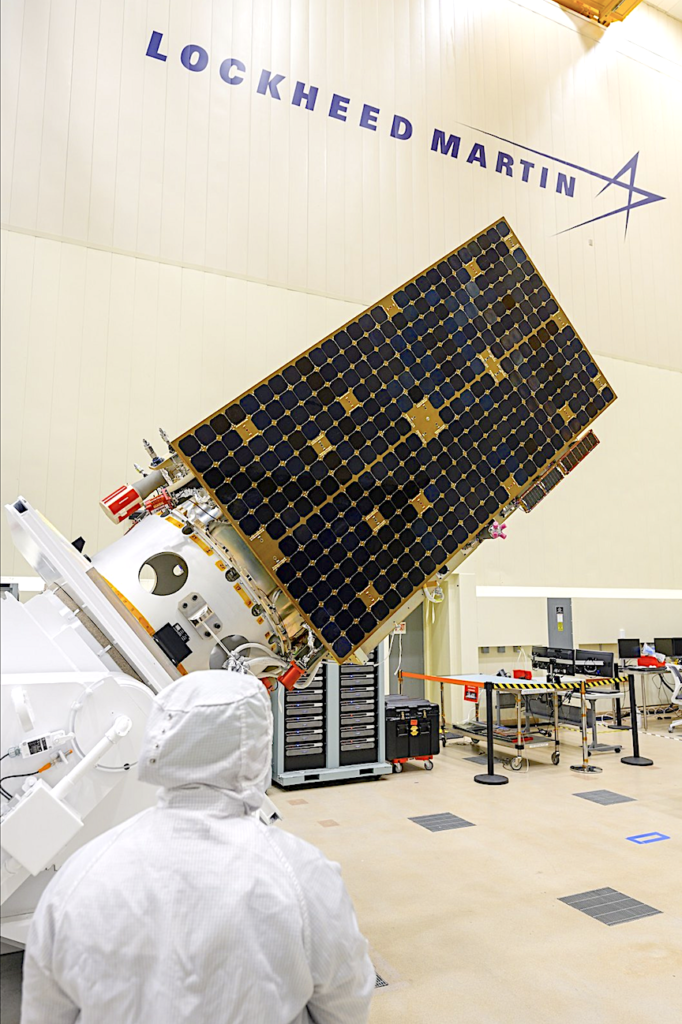
“Our end goal is to accelerate the technical maturity of our satellites and advanced payloads, as well as showcase how new capabilities can be delivered quickly to customers,” said Mahlman. “Lockheed Martin set out on a journey to develop and deliver a highly capable space vehicle faster than ever before; and what we proved is the ability to move from concept design to an integrated spacecraft in half the time.
The first LM 400 Tech Demonstrator planned for a 2023 launch will carry a Lockheed Martin-produced narrowband communications Electronically Steered Array (ESA) payload. The next LM 400 demonstrator, expected to launch in 2024, will test synthetic aperture radar-capable ESA on orbit using the LM 400 platform.